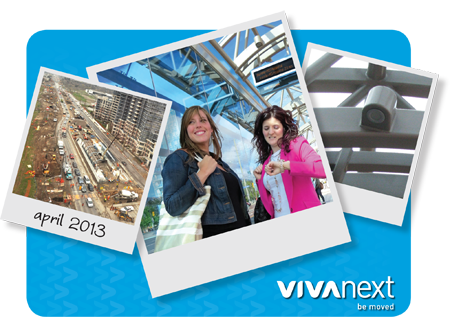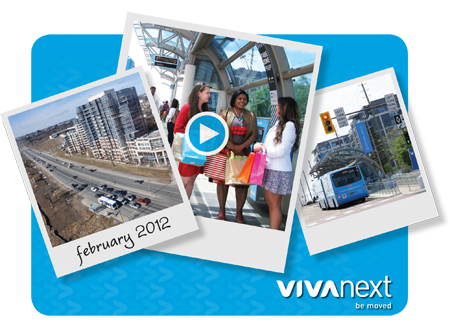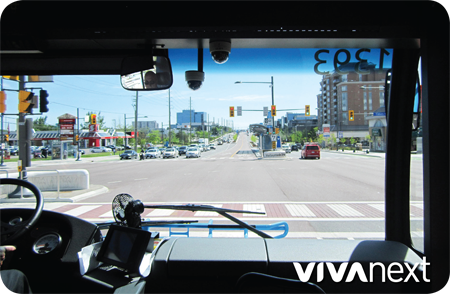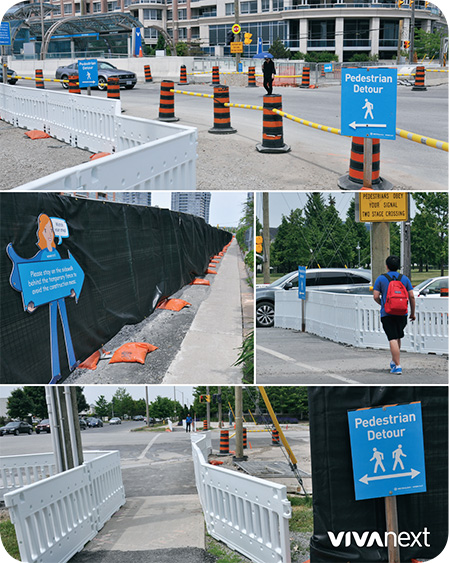Taking steps to ensure our passengers feel secure and safe using the new Viva stations is a top priority for YRT/Viva. Every detail of our new passenger stations on the Highway 7 rapidway has been designed with a view to make riders feel comfortable, well protected from the elements and adjacent traffic, as well as able to access help in an emergency.
With our median platforms located in the middle of a busy roadway, one of our top priorities has been to make the stations feel like a safe haven. Stations will provide a secure waiting place for passengers with a concrete barrier wall running all along the traffic side, and a glass guardrail beyond the canopy.
To access the new stations in the median, pedestrians must use the crosswalks and cross with the signal. When crossing the road to or from the new station, you must remember to push your pedestrian button to get the signal indicating when you can cross safely. Also, because this is new for everyone, it is important that pedestrians watch for traffic before stepping out to cross the road – there could be cars making left-hand and u-turns. Whenever there are changes, it is important to be aware of all the users to the roadway to ensure your safety at all times.
The new Viva stations reflect the CPTED (Crime Prevention Through Environmental Design) principles of transparency and good lighting, enabling people to see and be seen. We’ve paid careful attention to lighting levels, including along the platform and in the glass enclosure, which is fully visible to the platform and has doors at either end.
Each platform is well equipped with electronic security devices, overseen 24/7 by YRT/Viva staff at transit headquarters. Stations are monitored constantly by three CCTV (Closed Circuit Television) cameras. In addition to providing good coverage of the platform at all times, transit staff can maneuver the cameras manually as needed.
To add to passenger’s sense of security, a clearly marked Emergency Call Button (ECB) is located inside the glass enclosure, and its speaker provides immediate two-way contact between the caller and YRT operators. The audio of the call is recorded and time-stamped, as is the video that is automatically captured by the closest camera when the button is pushed. When the ECB is pushed, blue strobe lights on the VMS and on the ECB will be triggered to indicate to passing emergency services that assistance is needed, and transit staff will dispatch emergency services if required.
Also adding to these new features is the PA system that will be used to provide live and recorded public announcements from transit operations, which we talked about in a previous blog.
These new features are probably things that most people will never need to think about. All the same, knowing that we’ve gone to great lengths to maximize our passengers’ sense of safety, and that our transit staff are on duty 24/7 behind the cameras, should give all our riders total peace of mind. Be safe!










